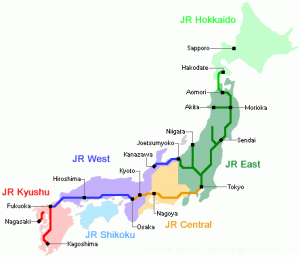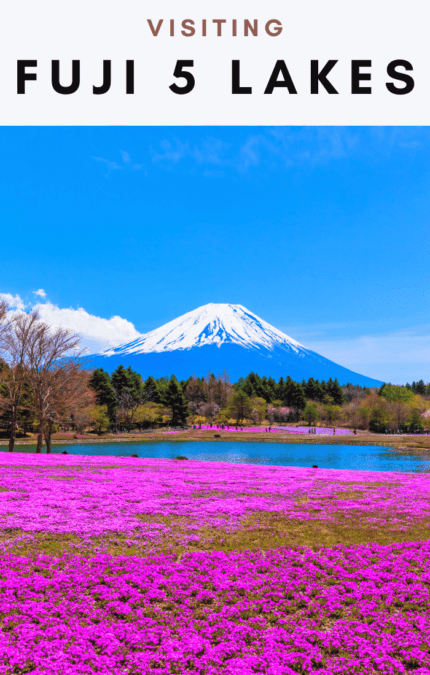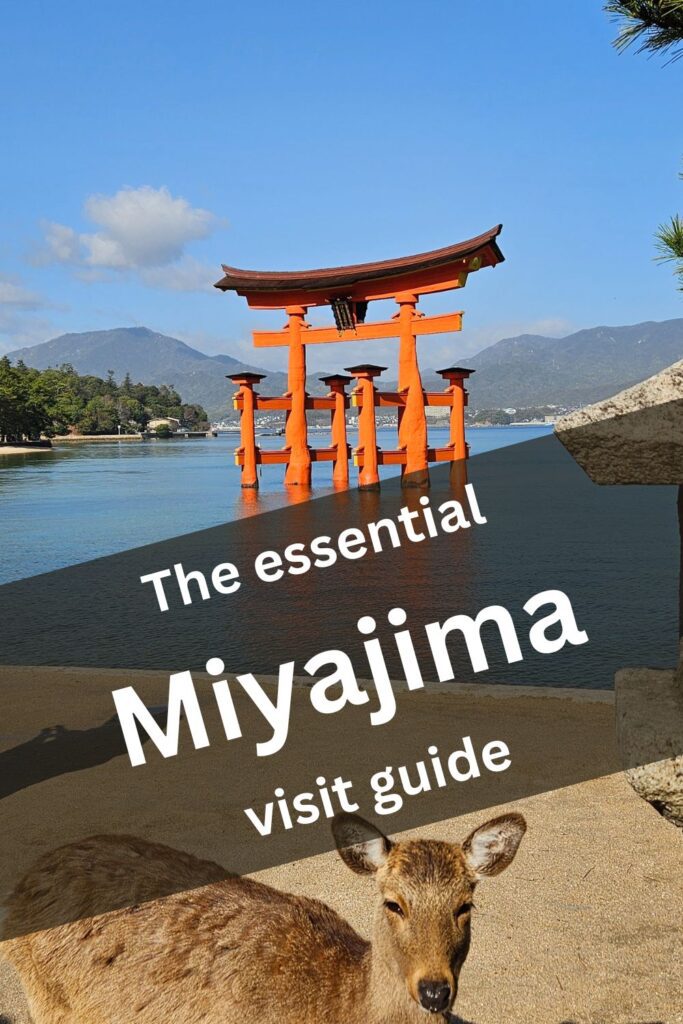Japan has 46 of the 50 busiest stations in the world, and this comes as no surprise. The country has one of the best, most capillary, and most efficient public transport networks on Earth. Considering the total area, Japan is slightly smaller than the state of California in the US. And the US has the largest rail network in the world. Yet think of how many people use the train in the US compared to Japan.

High safety, incredible hygiene, maniacal punctuality, and great care and attention towards social respect and manners from the people and passengers make traveling on trains an excellent transportation method and an almost delightful experience in itself.
Most tourists visit and explore the country by train, which is also peculiar when compared to other countries where it is seldom used as the main transportation mechanism.
Like many visitors, I too used the Japan Rail (JR) network extensively during my one-and-a-half-month stay. I also rented a car and explored, on my own terms, this beautiful country, but that is for another post (this one on my Japan Road Trip, in case you’re curious).
Basics
During the Meiji Restoration, which started in 1872, when the country went through an impressive and otherworldly rapid transition towards an industrialized nation, the railway network started to be built.
Today, more than 30,000 km of rail tracks spread through Japan, allowing travel between practically any two locations in the country. More than 9 billion (yes, billion) passengers travel through the rail system every year.
The Railway Network
Japan is divided into 6 regions, each one operated by private independent companies that together form the Japan Railways Group and cover 80% of the railway system (with many other companies operating on the remaining). The main regions and zones can be seen below:
- JR Hokkaido
- JR East
- JR Central
- JR West
- JR Shikoku
- JR Kyushu
Details of the single lines and routes can be found here: https://www.jrpass.com/map
Train Categories
As would be expected, there are several types of trains, each catering to higher speed and efficiency in reaching a destination as opposed to those with more granular and frequent local stops.
- Local trains: These are the kakueki-teisha (各駅停車) or the futsuu (普通). These are the slower intercity trains that stop at every station.
- Rapid trains: The junkyuu (準急) are local express trains
- Express trains: The kyuukou (急行) express trains stop at major stations.
- Limited express trains: These are the tokkyuu (特急) which stop only at major stations and often have an additional limited express fare that must be purchased on top of the ordinary ticket.
- Super express trains: These are the famous bullet trains – the shinkansen (新幹線). These high-speed trains have dedicated rail tracks that stop only at the main stations (often only 2 or 3). They require an additional fare on top of the ordinary ticket and have dedicated entrances and sections at train stations.
Electricity & Connectivity
On Shinkansen and limited express trains, seats have an outlet for charging devices, and most Shinkansen trains offer free WiFi on board.
Passenger Classes
Most local trains offer only one class: ordinary, and have non-reserved seats as well as being non-smoking
Long-distance trains such as limited express or shinkansen have two classes: ordinary and green, the latter being 1st class and depicted with a green clover. Green-class cars are naturally less crowded and have more space, but they are clearly more expensive. They offer both non-reserved and reserved seats. Each seat will have a color-coded light indicating whether the seat is reserved or not, and if it is reserved, whether the passenger is about to board the train so that the seat can be left vacant before their boarding. Shinkansen trains also offer smoking rooms between some of the cars.
Getting around in stations

As with many aspects of Japan, entering a train or metro station for the first time can be an overwhelming experience. However, as said, the system is very efficient and understandable. Most indications are also written in English, lines are color-coded, there are extensive personnel who can help, and there are no safety concerns or risks of scams, so you can safely stand in a clueless position in front of a map for however long you want. If you really have no idea where to go, you may be bounced around a bit by staff, as the main stations are often immense and have dedicated sections, so it’s not like you will find a general-purpose ticket counter.
In any case, moving around stations is everything that would be expected. Automatic gates separate the free, common transit zone from the train platforms. Each gate has several automated ticket counters nearby. Maps are everywhere (albeit hard to interpret due to their complexity), and there are many exits. The only issue might actually be getting out of stations, as some of them are massive, and using the wrong gateway exit may lead to being 2 blocks away from where you intended to get out.
Timetables
There are several apps for checking timetables, like Navitime or Jorudan, as well as, obviously, the large timetable screens at stations.
On top of this, the Japan Railway system is extremely efficient, and they are very proud of their punctuality. As such, Google Maps can also be used quite confidently to check train times, as they very rarely skip a beat.
Tickets
Tickets can be bought with prepaid IC cards (Suica, Pasmo, Icoca, etc.) or with cash, credit card, or mobile payments at the automated ticket counters or at human-operated ticket counters for assistance.
When using the automated booths, it is important to identify the correct ones, as many major stations will have metro lines, Express train lines, and Shinkansen lines, and often they have dedicated machines.
Tickets can also be bought through third-party websites such as baolau.com or the ever-present 12asia.go
Japan Rail Pass
A special mention for tourists must be given to the Japan Rail Pass. It is exclusively aimed at foreign visitors and is very common and cost-effective. It needs to be bought before arriving in the country, and one must prove they are a foreigner or expat living abroad. They have a fixed duration (either 7, 14, or 21 days) from the first use.
The JR Pass must be physically picked up at a train or metro station, and what you receive online is just a confirmation voucher with proof of acquisition that you then need to exchange for the actual pass.
The JR Pass is by no means cheap and has recently had a large price spike, but it still remains more convenient than single tickets. There are 3 variants to the pass, as follows:
| Days | Ordinary (2nd class) | Green class (1st class) |
| 7 | 207 € (¥29,650) | 277 € (¥39,600) |
| 14 | 329 € (¥47,250) | 449 € (¥64,120) |
| 21 | 423 € (¥60,450) | 583 € (¥83,390) |
Almost all travel blogs consider the JR Pass a must-buy for visitors. I somewhat disagree. Trains in Japan are quite expensive, and the JR Pass does provide incredible value. But that is, of course, if you actually use it. If you plan to visit the major tourist destinations like Tokyo, Kyoto, and Osaka in, say, a week, then the JR Pass is definitely good value, as it will cover the limited express trains between these cities as well as the Yamanote metro line in Tokyo. If, on the other hand, you are planning on taking it slower and staying several days at each destination, then the JR Pass is not for you as you will not use it that much.
In case you decide to use it and will most likely arrive in Tokyo, I recommend not using the JR Pass for the metro and delaying as much as possible the activation of the pass until you actually need it for intercity transfers.
To give an idea, the 200 euros of the 7-day JR Pass are equivalent to a round trip from Tokyo to Kyoto, and the metro is a little over 1 euro for a city journey of a few stops, so clearly it needs to be used for the long-distance bullet trains.
Also note that the JR Pass also doesn’t cover the Nozomi or Mizuho Shinkansen trains, which are the two fastest trains, but the second-fastest Tokaido and Sanyo Shinkansen can be used and cover the same destinations.
Finally, when buying an additional perk, such as a green class or reserved seat on a Shinkansen, you will need to insert both tickets together (the JR Pass and additional ticket) in the gate slot. Don’t forget to retrieve your precious JR Pass after passing through the gate!
For more information and up-to-date ticket prices see the JR Pass official website: https://www.jrpass.com/
Quirks & Etiquette
- Japan is well known for its careful attention to manners and etiquette, and trains are no different, and in some way the embodiment of this culture.
- The famous custom of not talking on the cellphone inside trains is very much followed, and you will definitely get judgmental looks if your phone rings and you answer and actually have a conversation instead of walking away or saying that you will call back.
- When boarding trains and metros, onboarding passengers stay on the two sides of the opening doors, allowing all passengers to descend before entering. Also, and this is especially true at Shinkansen trains, the train stations have well-marked areas indicating which train car number will be at a specific door, and passengers will queue up sideways before their door. Do not ignore these lines, as “queueing culture” is very strong in Japan.
- Eating and drinking are not frowned upon and are actually quite common. It is so widespread and part of the culture that it is common to find bento boxes in trains and train stations that sell Ekiben (駅弁, literally “railway bento”).
- As everywhere in Japan, leaving trash behind is a total no-no.
- As for escalator etiquette, in the eastern parts of Japan, people stand on the left of escalators (as they do in general, like walking on the streets), whereas on the western side of the country (for example, in Osaka), they stand on the right.
Safety & Security
As per train safety itself, since its inception in 1964, there have been no accidents on the Shinkansen bullet trains.
In large cities such as Tokyo, the metros can be incredibly crowded during rush hours. The most publicized safety risk is not so much pickpocketing but groping for female travelers (Chikan, 痴漢, “body contact”). Many metro lines actually have female-only train cars.
Joyful Trains
All the above are normal commuter trains, but Japan offers many trains aimed at tourists or just people wanting to have fun or have a different experience. There are “joyful” trains: from Hello Kitty-pink to Pikachu-yellow Pokemon to Sonic-blue Sega-themed trains, there is no shortage of quirky rides. Some trains offer entertainment, art galleries, shows, and dances on board.
Landscapes
Japan’s countryside is as famous and fascinating as its immense cities, and traveling by train allows one to see some of the beauty of this country. On some limited express trains often used by tourists, there will also be English voice recordings describing particular sightseeing spots or remarkable points of interest.
There are several sightseeing routes and some incredibly luxurious train rides, such as:
- Sagano Scenic Railway is a short but beautiful scenic route connecting Kyoto to Kameoka.
- Seven Stars is the only luxurious train with 20 passengers covering the southernmost Kyushu Island.
- The ultra-luxurious Twilight Express Mizukaze, which has extensive waiting lists,
- The even more luxurious and exclusive sleeper train Suite Shiki-shima from Tokyo to Hokkaido, with designer-made rooms and even longer waiting lists (as well as random passenger draws),
- The Gono Line is considered the most scenic route, running along the north-western coast of Aomori and Akita prefectures.
- Kurobe Gorge Railway in the Japanese Alps
But even without taking a scenic train, the “simple” Tokaido Shinkansen from Tokyo to Kyoto offers wonderful views of Mount Fuji. Be sure to take a window seat on the right side if traveling from Tokyo and on the left, if traveling from Kyoto, to view this magnificent sacred mountain.
Even better, hop off, take the Chuo line, and change at Otsuki to get to Lake Kawaguchi at the steps of Mount Fuji. See this article for more information on the spectacular and unforgettable visit to Mount Fuji and the Fuji Five Lakes.






